
Wow. On a recent trip to Lisbon, I made a point of visiting the National Coach Museum, as I’d run out of time to do so on a prior trip. Again, wow. I knew it was one of the largest and most comprehensive coaching museums in the world, yet I was still bowled over by the massive collection. So impressed was I that I suggested to my fellow guide, Gareth Glover, that we add it to the itinerary of Number One London’s Peninsular War Tour in May 2024. And so we have.
The National Coach Museum (Museu Nacional dos Coches) houses an important horse-drawn carriage collection of vehicles from the seventeenth, eighteenth and nineteenth centuries, including coaches, berlins, sedan chairs and carriages of all kinds. Over one hundred of them, in fact. The photo below will give you a rough idea of the space that houses this amazing collection and the following carriages just a taste of the vast collection that is on show.
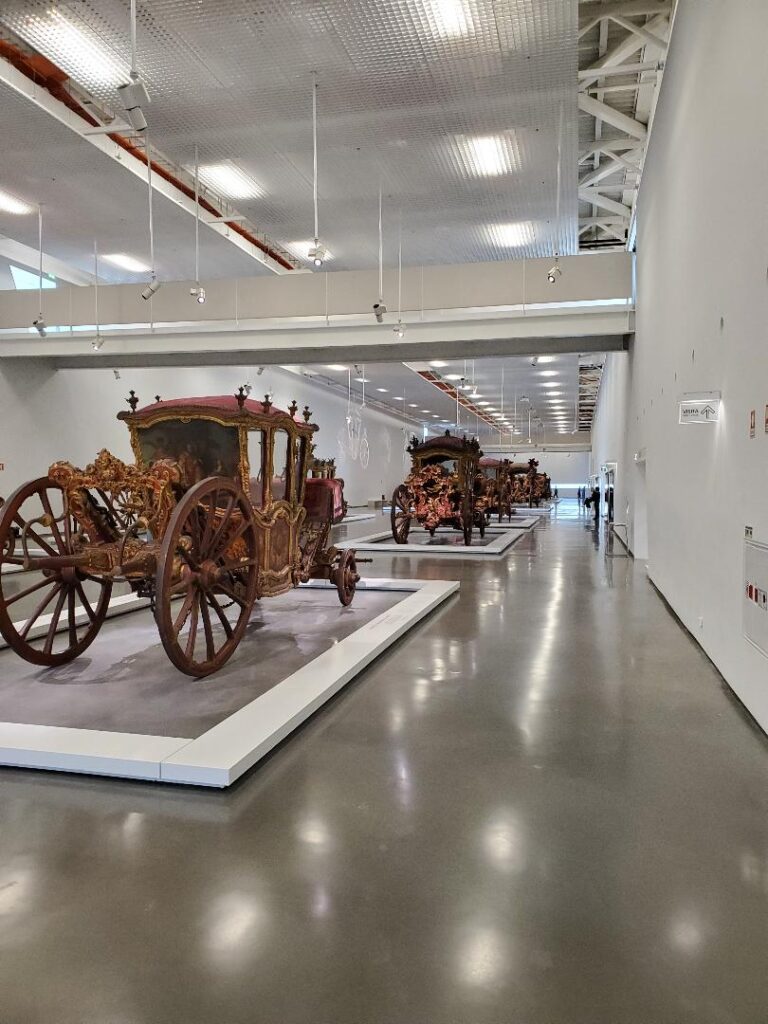
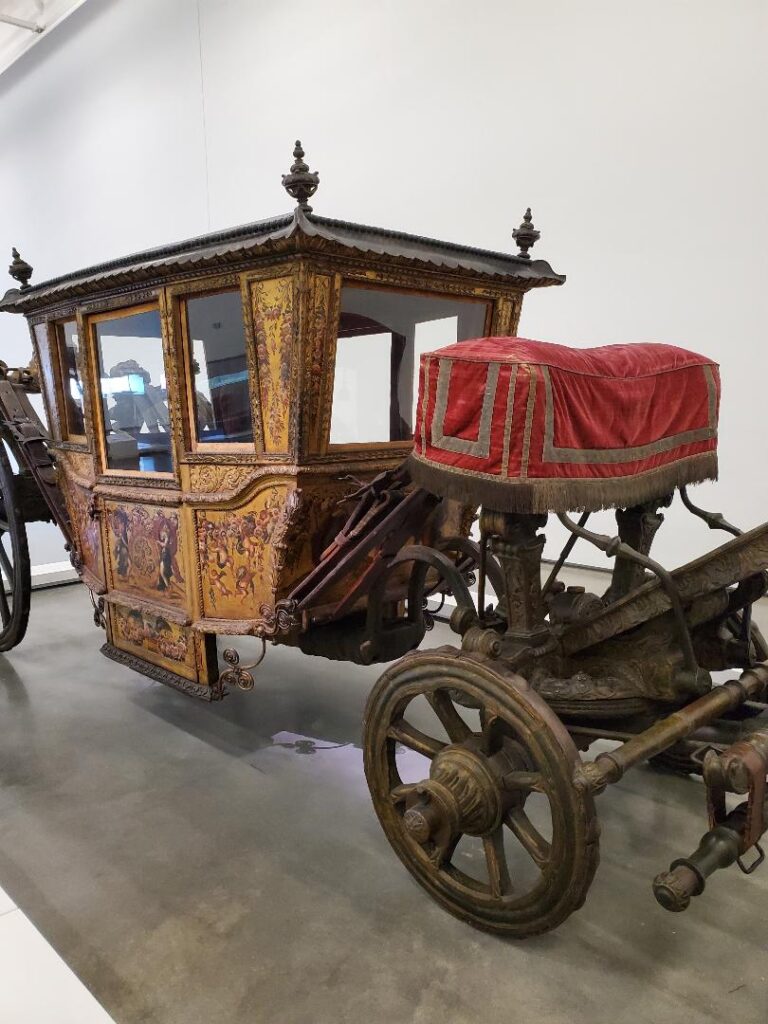
Here is a rare example of the “Carrosse Moderne,” that appeared first in Paris. It belonged to Queen Maria Francisca of Savoy-Nemours, cousin to King Louis XIV of France. It was brought to Portugal as part of her wedding dowry in 1666.
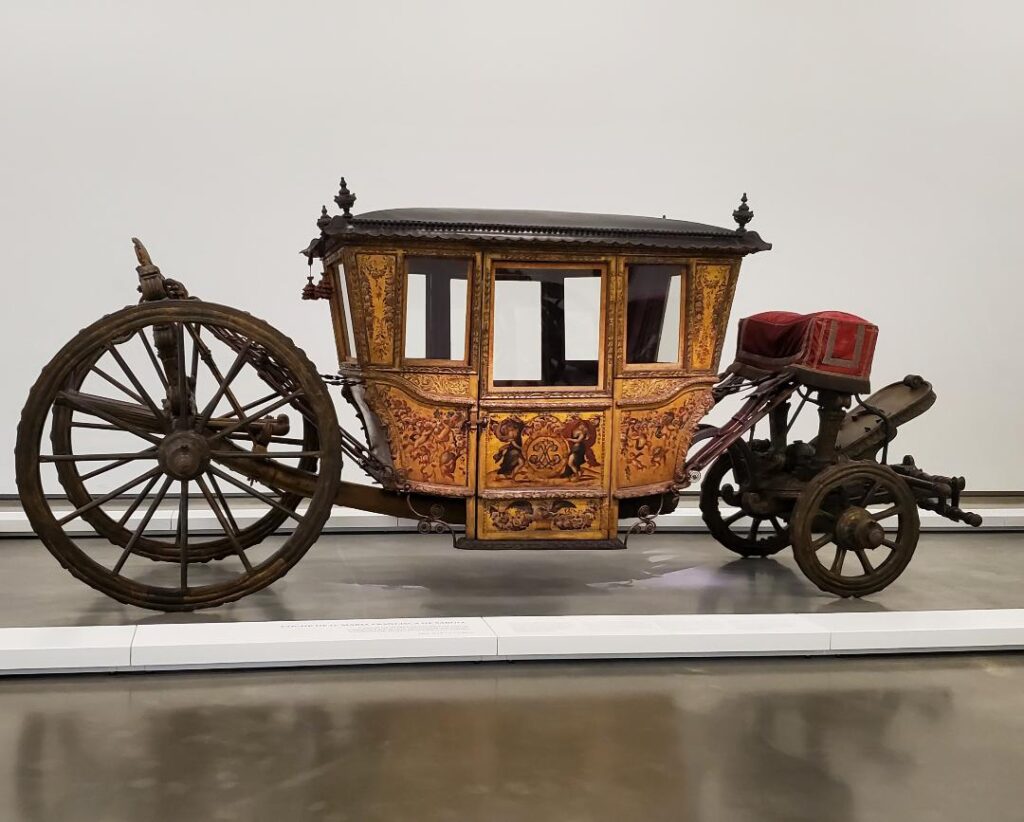
Below, a fold out camp bed used on long journeys.
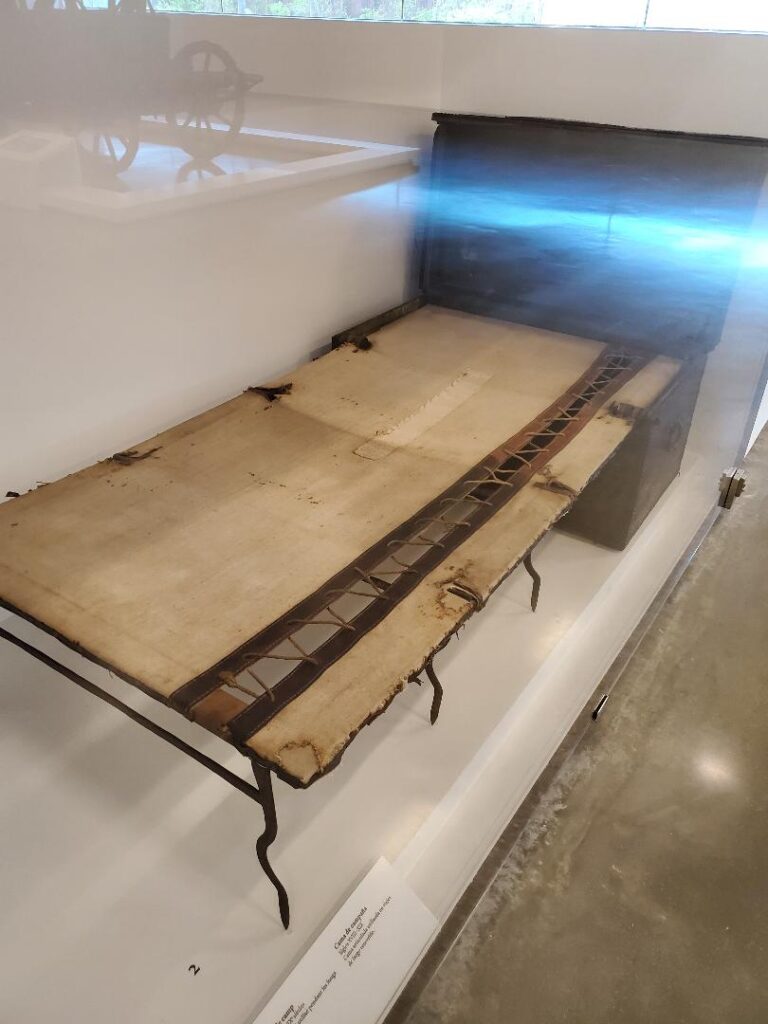
Below, a Dutch carriage commissioned by Emperor Joseph I of Austria in 1798 for the marriage of his sister, Maria Ana, to the King of Portugal D. Joao V. The carriage body is covered with fine gold leaf and decorated with crowned lions, monograms and the Portuguese Coat of Arms. The wheel spokes are shaped like sceptres.


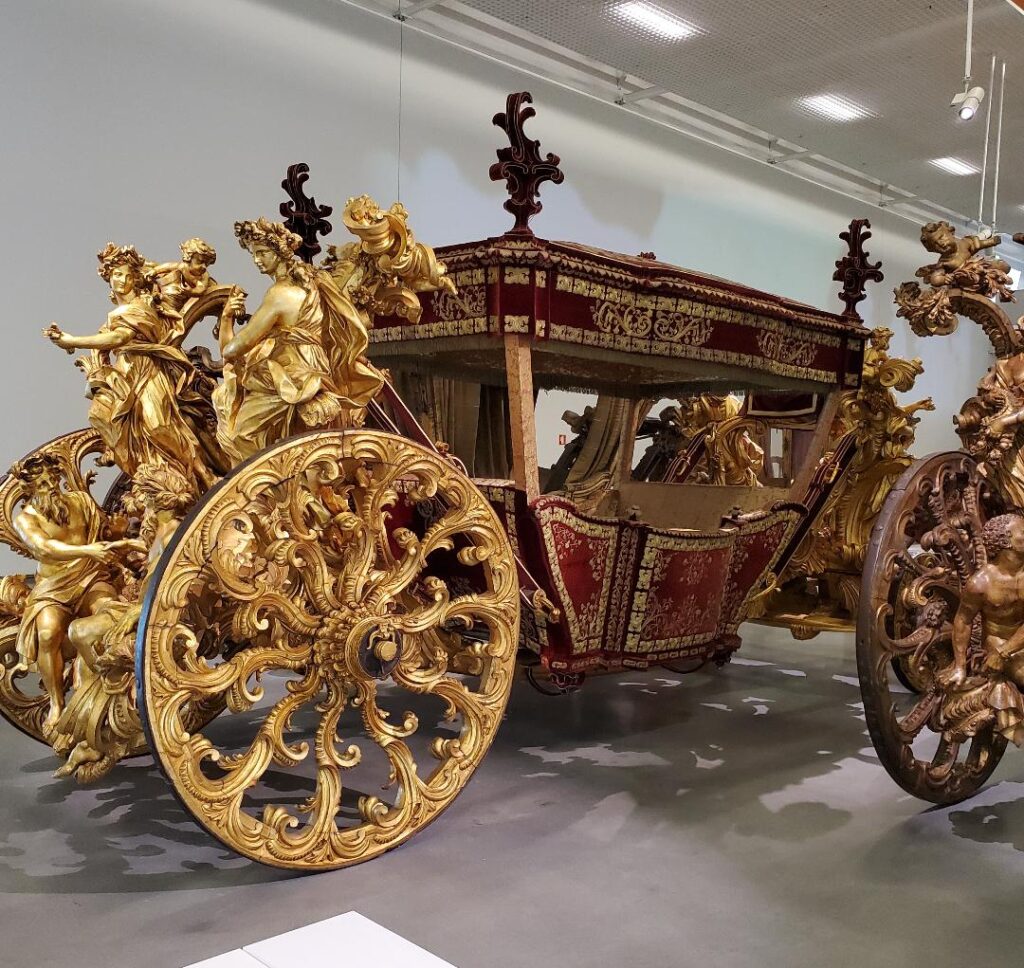
Above and below, an Italian built coach paying homage to the maritime history of Portugal. On the rear, Apollo is flanked by two female figures representing Spring and Summer. In front, two elderly men, representing the Atlantic and Indian Oceans, shake hands.
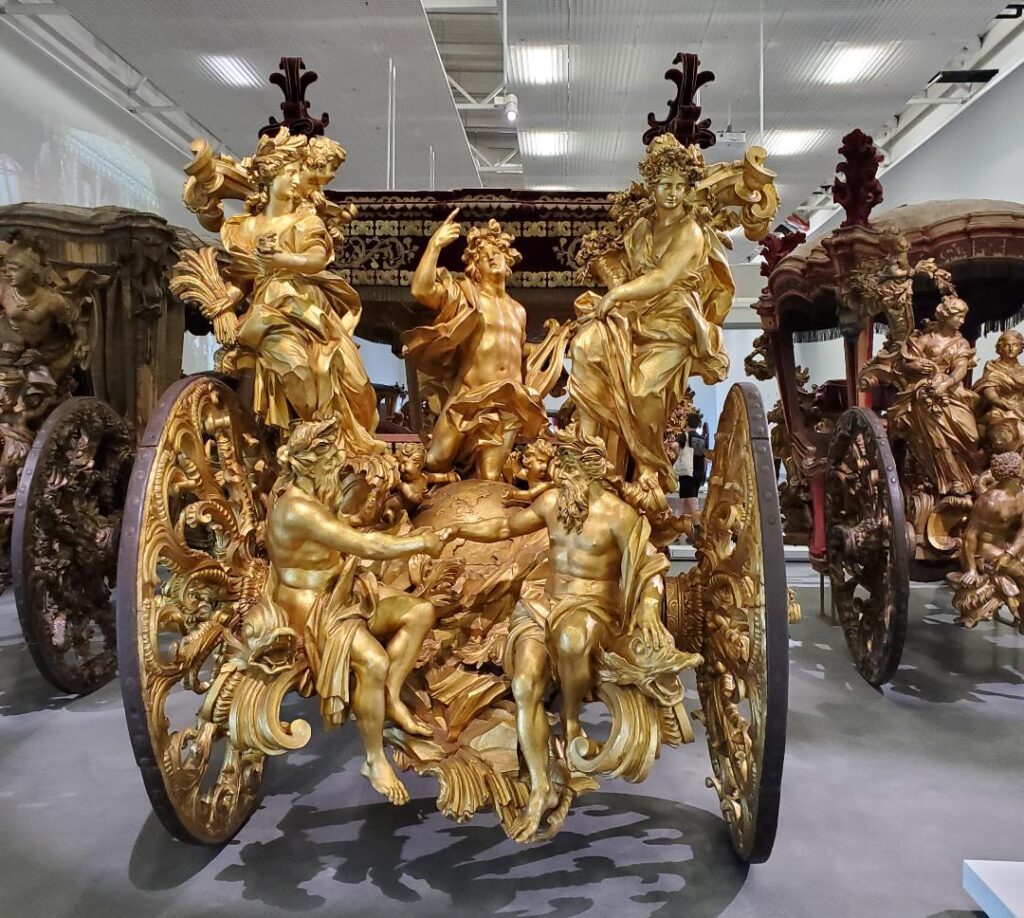
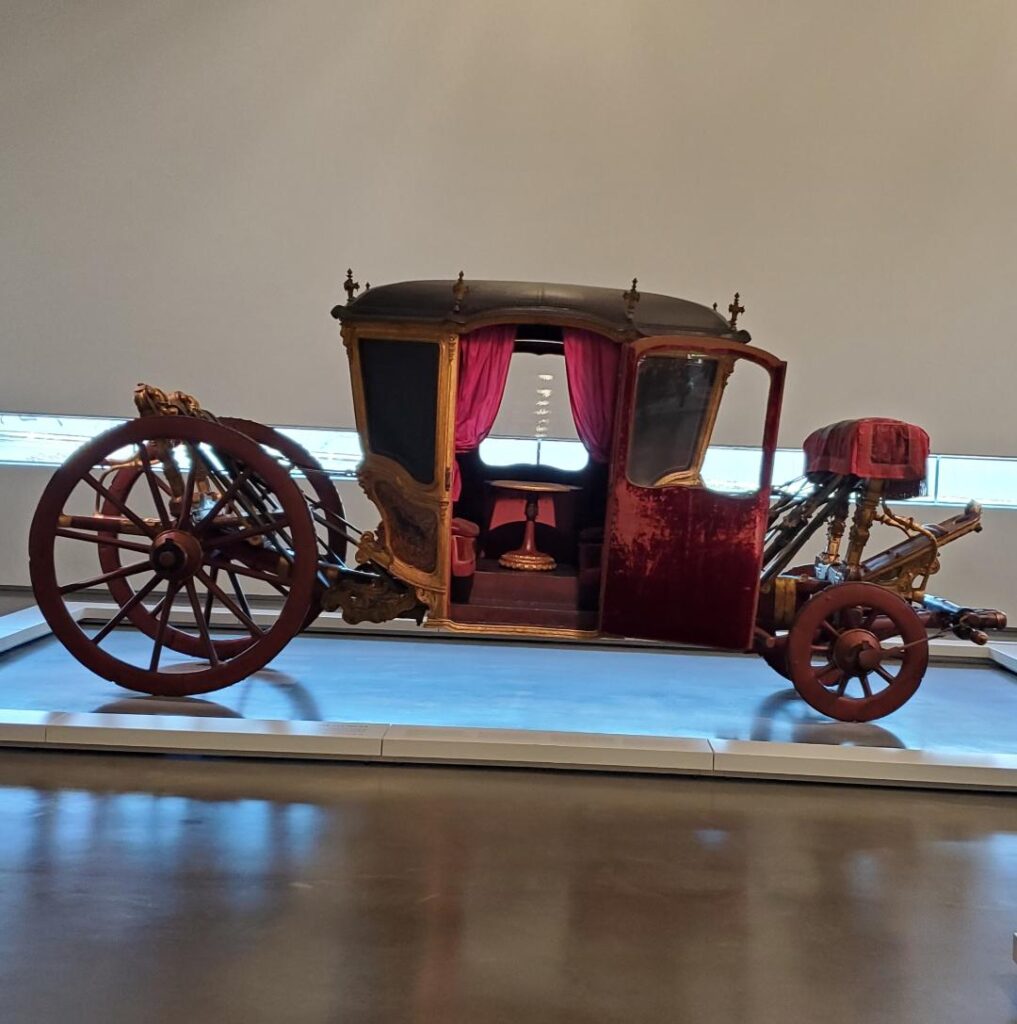
Above and below, a Portuguese procession coach built in 1729. The table inside could be used for meals during long journeys or when in procession.
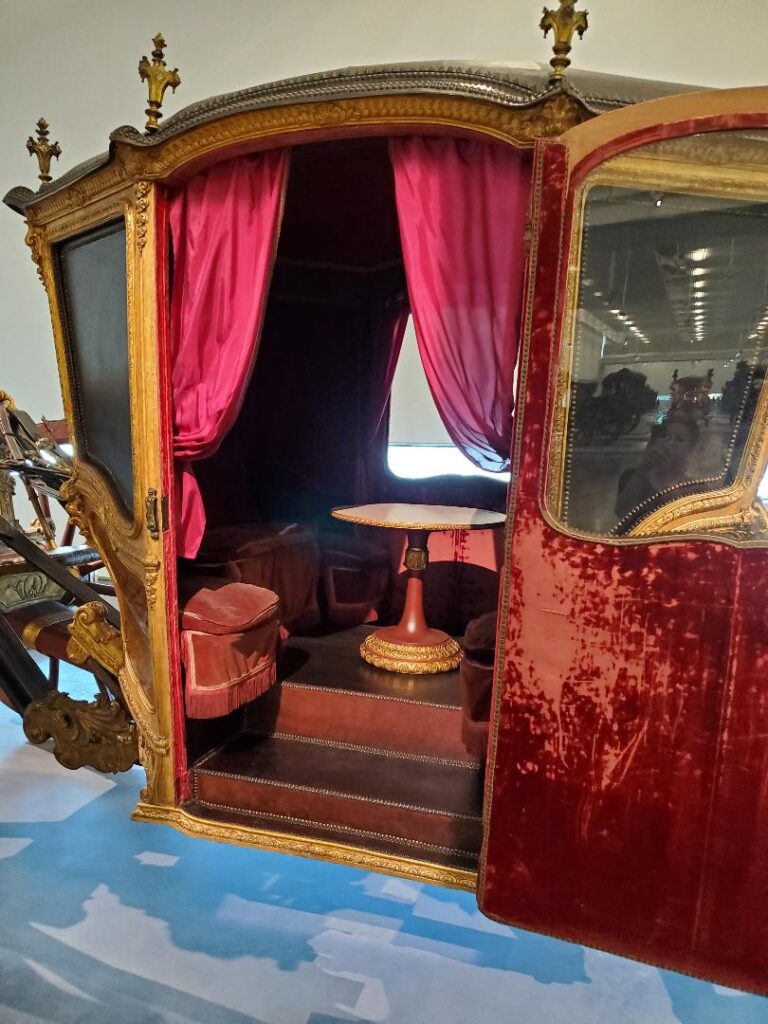

Above, an Eyeglass Chaise, allowing the occupants to stay dry in wet weather.
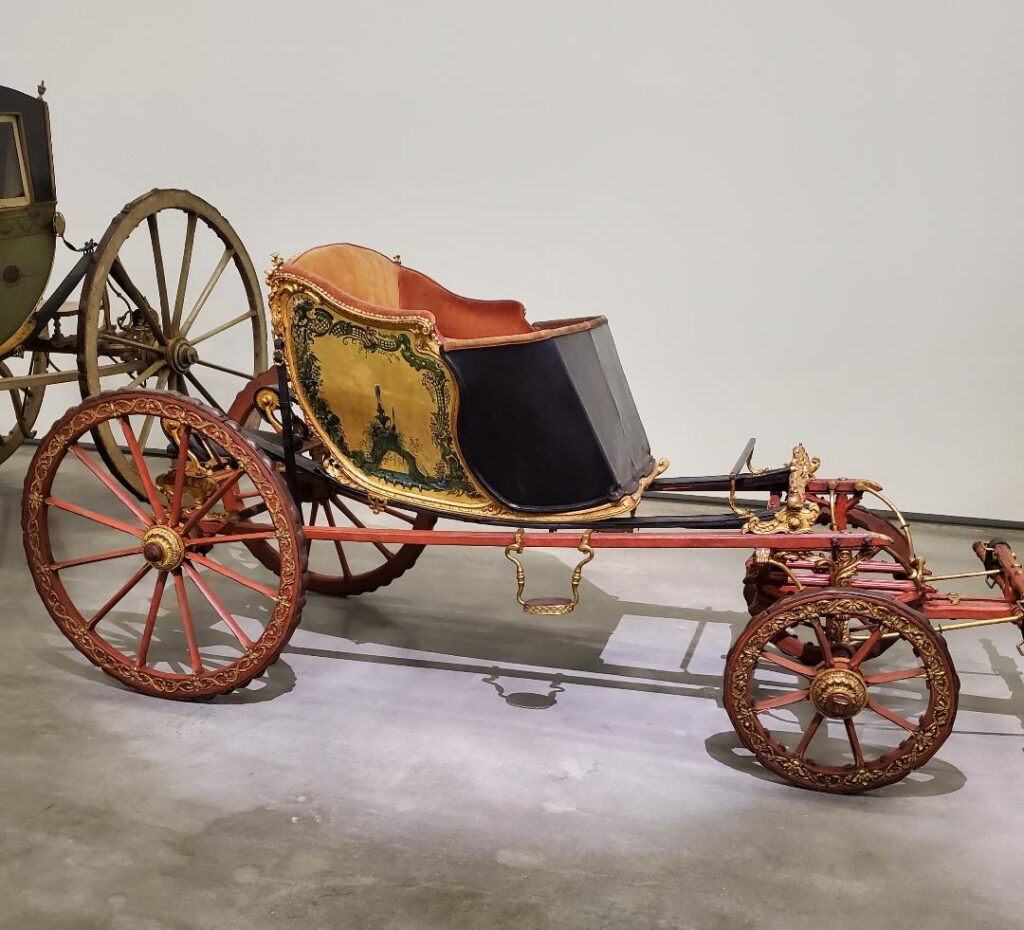
Italian made promenade vehicles, used by the Royal Family on their estates and in the palace gardens. There is a seat at the back for the groom.
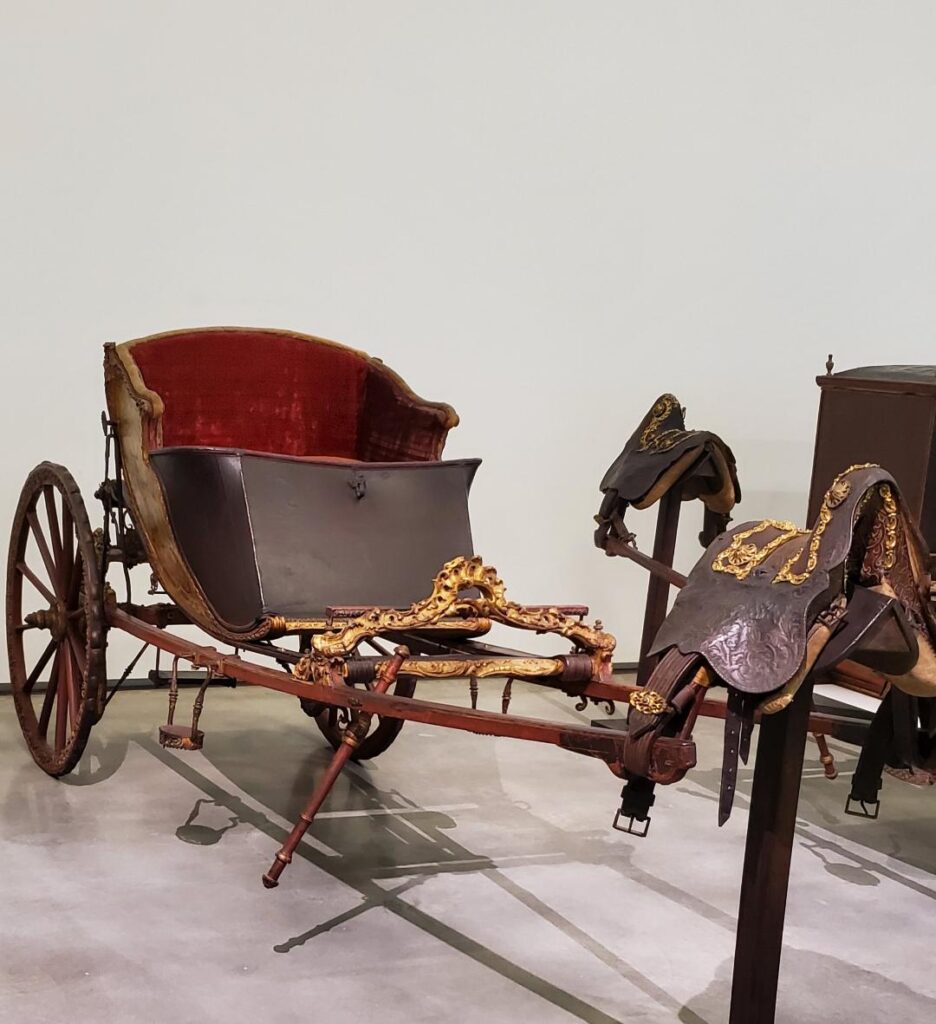

Litters, or sedan chairs.
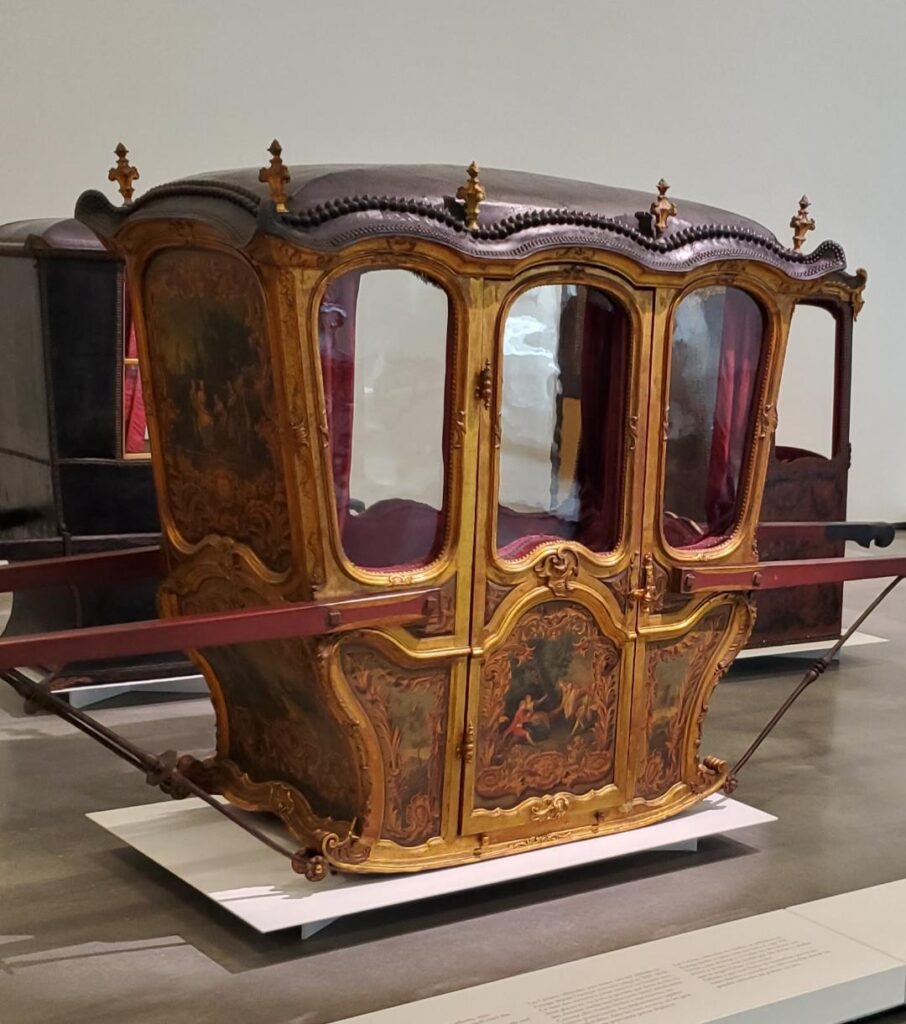
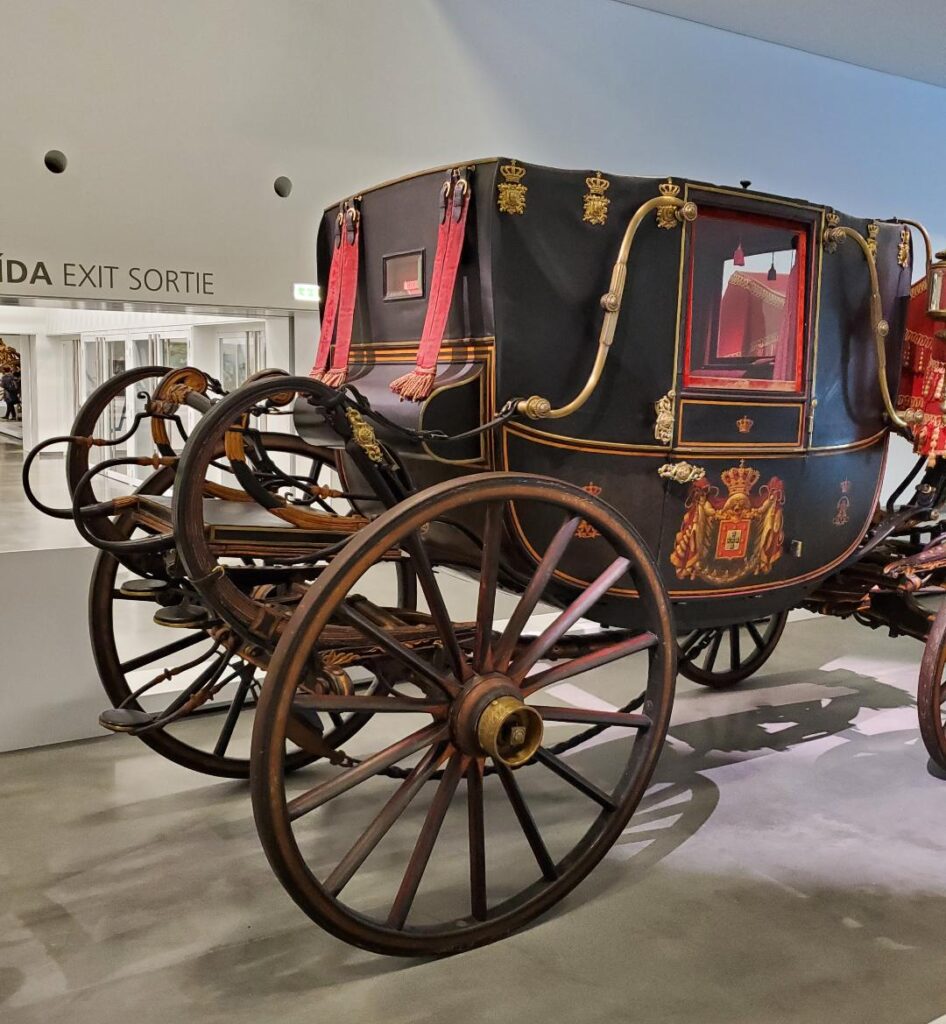
Above, an Empire style state carriage commissioned in 1824 in London by King Joao VI. The coachman’s seat is very high and the roof displays a royal crown. Used for the coronation of King Carlos I.

An English state coach commissioned by Queen Maria II. The Portuguese Coat of Arms decorate the doors, access to the interior is made via folding steps. A rounded box sits at the rear to carry weapons. Manufactured at J.R. Pearce’s workshop, London.
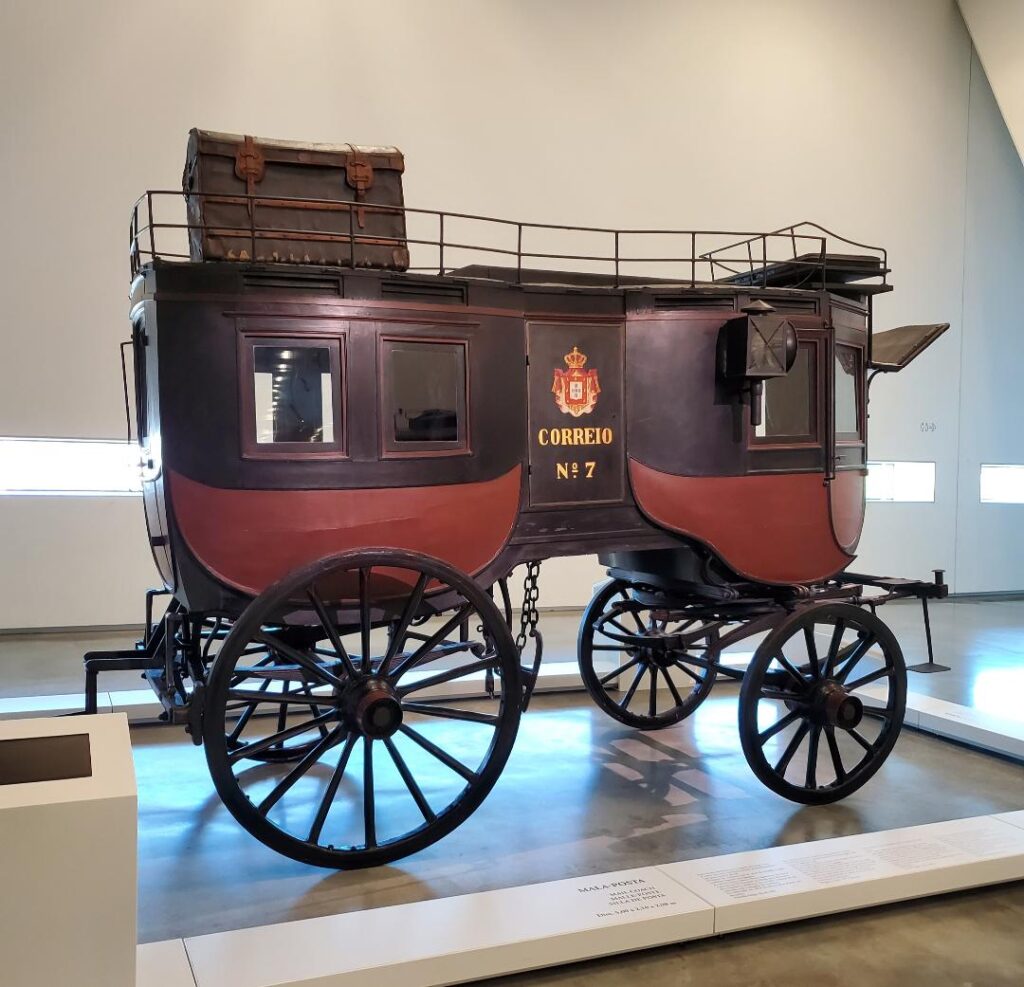
Above and below, a long distance coach built in 1854 by the Jones Freres workshop, Brussels. The body has two separate compartments for passengers and one for offical mail. Travel between Lisbon and Oporto took 34 hours, with 23 stops along the way.


Above and below, a Portuguese prisoner carriage. The metallic box body has eight fake windows surmounted by respirators. Inside are six individual cells, three on each side. Two prison guards locked the cells and remained seated at each end of the corridor, front and back. The rear fold down seat can be seen in the photo below.

If you’d like to visit Lisbon’s National Coach Museum, we hope you’ll consider joining us on Number One London’s Peninsular War Tour, May 2024. You’ll find complete itinerary and further details here.